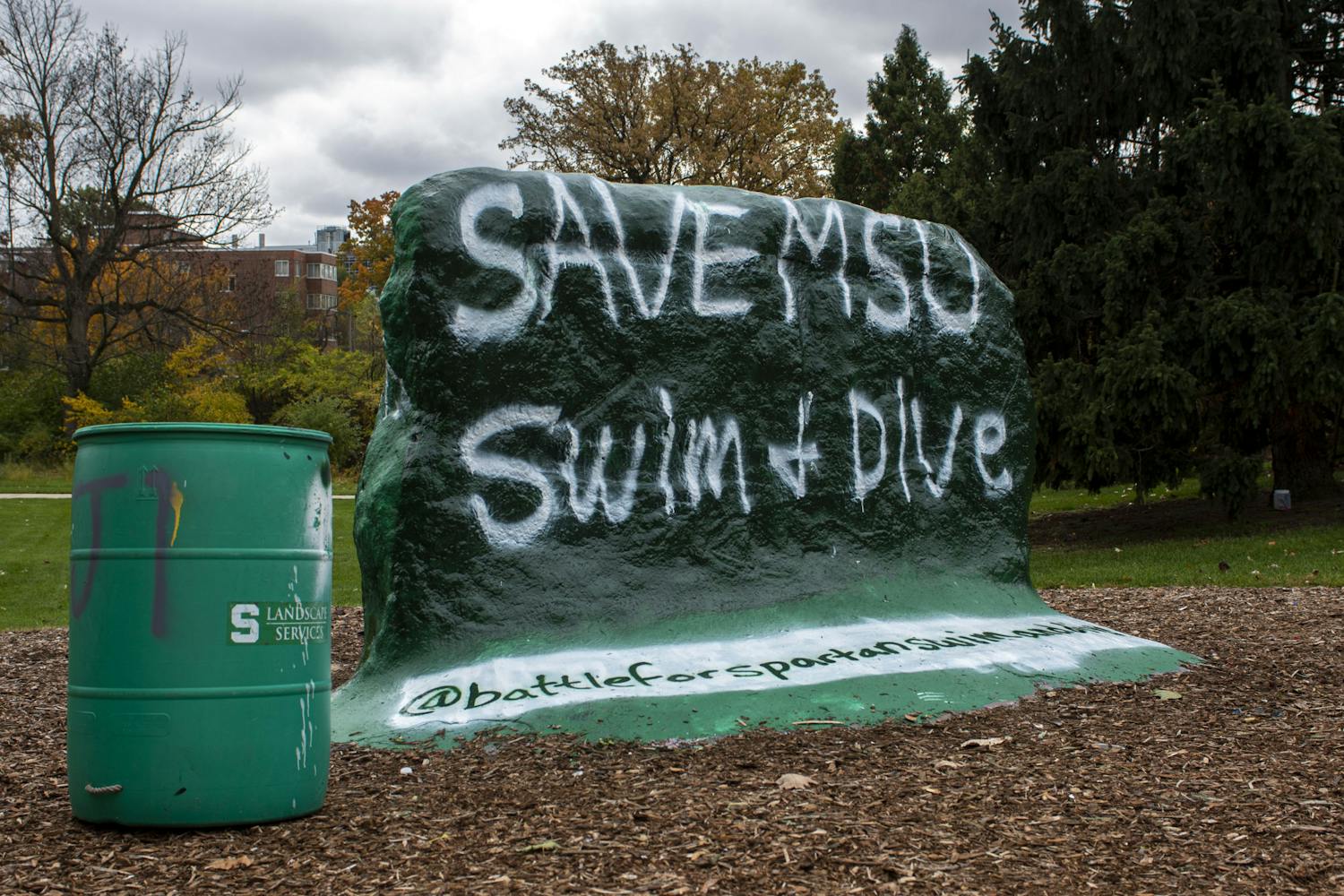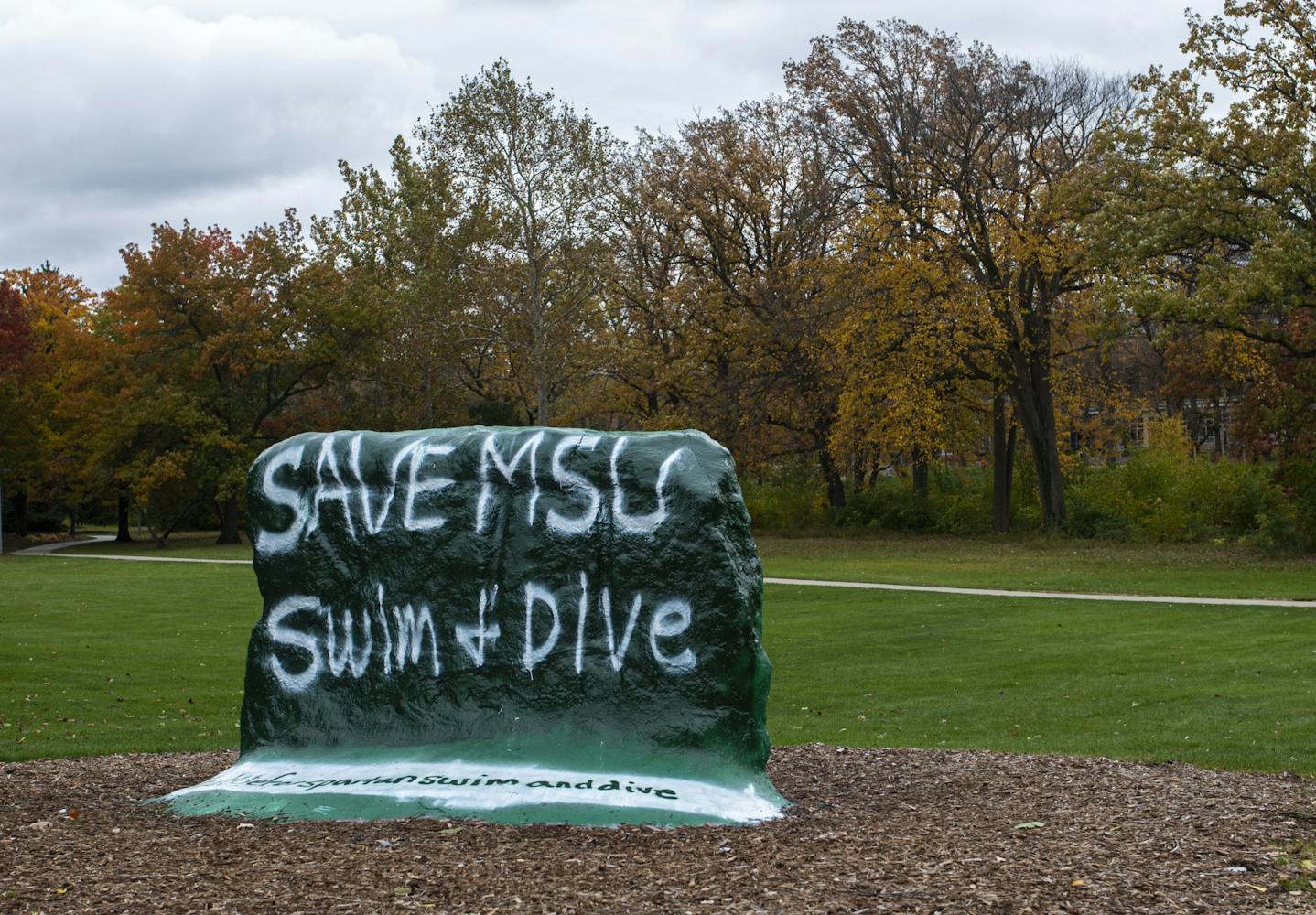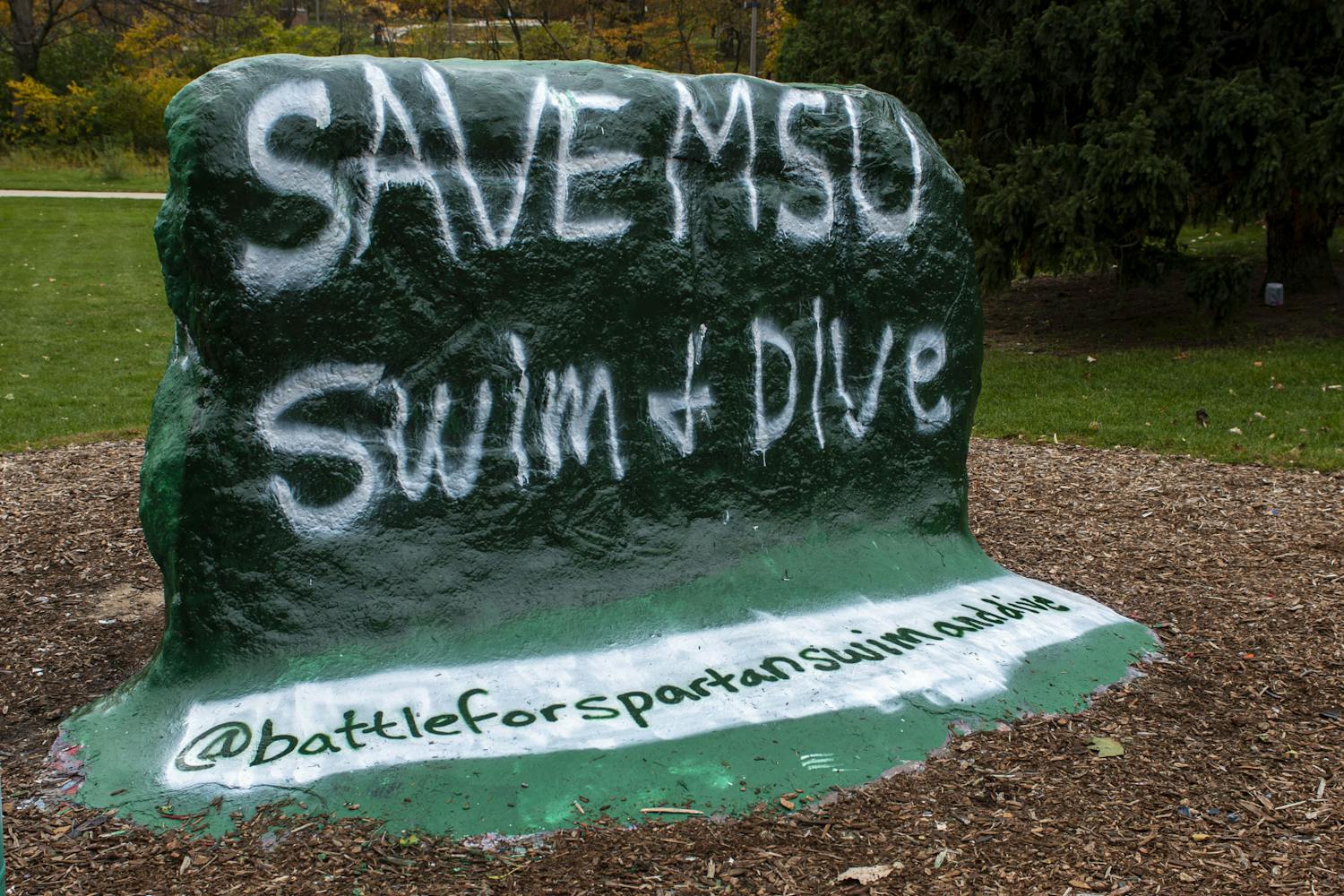Following the news last week that Stanford University would be reinstating 11 varsity sports after eliminating them in the fall because of COVID-19, the pressure ramped up for Michigan State and Athletic Director Bill Beekman to make a decision to reinstate MSU swimming & diving or move forward with eliminating the varsity sport.
After Stanford’s announcement, Battle for MSU Swim & Dive, a group of alumni, current swimmers and parents, said they would be meeting with Beekman to discuss the decision and if MSU would follow Stanford’s lead.
When Beekman met with members of the Battle for MSU Swim & Dive group last week to discuss the decision to eliminate the program following the 2020-21 season, clarity was expected about the choice to end the 100-year program.
The conversation, however, provided little insight into the athletic department’s decision on top of the original reasoning to cut the program.
The two-hour conversation between Battle for MSU Swim & Dive and Beekman dissected every aspect of the decision to try to understand every factor that led to swimming and diving being discontinued, but many questions remain about the decision and MSU’s insistence on not working with the community to reinstate the program.
The members of the public became more indignant as the meeting went on as they grew increasingly frustrated with Beekman while he answered each question in a calculated and careful manner. The members repeated and asked questions in different ways, but Beekman continued to tread carefully and stuck to his script as the tension grew, leaving many questions without concrete explanations.
In the initial press release on Oct. 22, 2020, they said the program would be cut because of financial difficulties for the department due to the COVID-19 pandemic, and that remained to be a major reason to cut the program, according to Beekman on Thursday.
Beekman said that the athletic department was facing an $80 million revenue shortfall over the last year and looked to cut expenses without taking a loan from the university. Beekman said they reduced spending by $50 million, but still needed a way to make up for the revenue deficit and turned to evaluate each sport to see what could be cut.
Beekman said they evaluated each program on the same five criteria, focusing on the on-field performance and financial impact of the program on the athletic department to make the decision. Beekman said swimming and diving stood out because it has been the least competitive varsity sport for MSU over the past 25 years and would cost the most to make the program competitive on a national level.
The expected expenses for the athletic department for the swimming and diving program included the renovation of the outdoor pool or building a new one completely.
Beekman said at the meeting there was a contract in place in 2019 for renovations totaling around $8 million, but it fell through due to lack of support from MSU administration after the price was more expensive than expected. Also, the athletic department did not commit $2 million for the renovation.
Beekman then followed that up by saying that the athletic department is not responsible for building a pool on campus and that burden mostly falls on the university administration. He cited examples from around the Big Ten and said one would be hard-pressed to find a school where the athletic department pays for a pool for the entire student body.
In saying this, Beekman undermined the main part of the reasoning to cut swimming and diving. The expenses facing the program that seem too exuberant to keep the program are related to renovations to the aquatic facilities to make them Olympic level. If the athletic department is not on the hook for the majority of the renovation or building payments, the reasoning that the swimming and diving program is too expensive to continue does not make sense.
The swimming and diving program actually makes money for the university in terms of scholarship money for athletes. Between the men’s and women’s teams, there are 24 athletes on scholarship and over 40 walk-ons that pay full tuition, resulting in a net profit of around $1.3 million for the university, according to MSU’s tuition calculator.
Beekman was correct in saying that the swim and dive program has struggled as a team within the Big Ten in the last quarter-century. Since 2006-07, the men’s team has placed last in the Big Ten every year besides 2009-10 and the women’s team has been in the bottom four teams in the conference every year in the same time span.
However, there are many teams at Michigan State that have struggled as well. Michigan State wrestling has four years with a winning record over the past 25 years and does not have the talent to compete with the powerhouses of the Big Ten. The men’s tennis program has not finished above sixth in the Big Ten in the last 25 years and has two wins total since 2016.
This is not to say that either of these sports should have been on the chopping block instead of swimming and diving, but that swimming and diving are not alone as an MSU team that struggles in the Big Ten. Beekman’s argument that swimming and diving was the least successful sport at MSU is subjective and could be argued.
Beekman said in the meeting that his main focus as athletic director was to field competitive programs in every sport and to be able to compete in the Big Ten. He said this was a major part of the decision-making process that led to swimming and diving being cut. However, the swimming and diving program sends athletes individually to the NCAA championships consistently, including Amanda Ling this year, to compete at a national level and represent the Spartans.
The final part of the confusion surrounding Beekman's explanation was the lack of desire to find a solution to the problems and look to reinstate the program. Multiple members of Battle for MSU Swim & Dive asked Beekman for ways to move forward and work together to bring the program back, but Beekman insisted that they have explored every idea to save swimming and diving.
The group pitched ideas such as fundraising from the MSU community, endowed scholarships for the team or even delaying the cut for another year to fundraise the necessary funds to save the program. Even after insistence that it could be viable, Beekman said it would be a very “heavy lift” to revive the program.
Support student media!
Please consider donating to The State News and help fund the future of journalism.
Beekman said he would talk to the group again but wanted to do it in private so there wouldn’t be media coverage of what is said at the next meeting. He said he wanted to discuss the group’s ideas for saving the program after spending two hours explaining the reasons why the program would not come back.
The promise of another meeting is a great next step for Battle for MSU Swim & Dive, but the reality that the program will be reinstated moving forward does not seem great following Beekman’s comments last week.
Discussion
Share and discuss “COLUMN: The decision to cut swim and dive remains confusing following Beekman's explanation” on social media.









